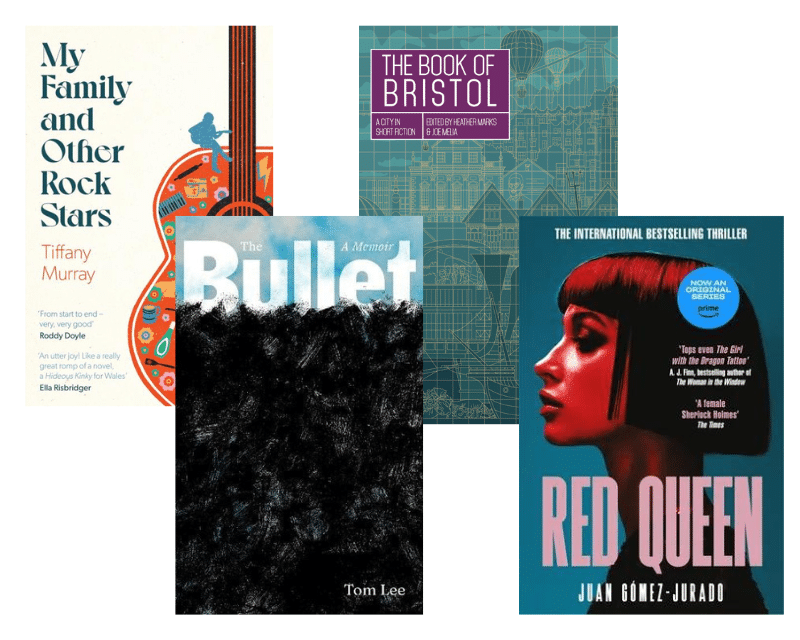- Collected
- Article
Moving Pictures, Moving Words
Cinema and the Novel

- 25 September, 2017
- Linda Buckley-Archer
I always loved the medium of film. Despite the inevitable restrictions of writing what is essentially a blueprint rather than a finished article, I tried my hand at scriptwriting before I ever attempted a novel. That experience taught me a lot, particularly about narrative structure. When I turned to writing prose fiction, it made me keenly aware of differences and similarities, and the ongoing relationship between moving pictures and the written word.
Cinema and the novel have been on intimate terms since the earliest days of silent film and it is arguably surprising that the relationship developed the way it did. But first steps leave deep imprints, and what the pioneers of early cinema wanted to do, above all, was to tell a story. So, it was to the written word, and to the novel in particular, that they turned for inspiration. During the era of silent film, for instance, around one hundred adaptations of Dickens’s novels were made.
In the early days, the relationship between cinema and the novel was somewhat one-sided, although it didn’t take long before the fledgling art form started to exert an influence over the established one. Today, it is accepted that literary agents will woo film production companies, Hollywood scouts will attend the major book fairs, and publishers and booksellers will salivate at the prospect of a ‘movie tie-in’. After all, in the Best Film category of the Academy Awards, the majority of winners have been adaptations. For an author, seeing your novel transformed for the big screen might be a joyful or a bittersweet experience. For readers, a screen adaptation, even a mediocre one, is curiously alluring: we know what we’re getting, and there’s a satisfaction to be found in responding to it in a second medium.
The ties that bind cinema and the novel go beyond mere commercial opportunity. We’ve all grown up watching films; we’re all expert at ‘reading’ film narrative. It’s inevitable, then, that readers will talk about books in terms of ‘a film running in my head’ and that novelists will produce prose that is recognisably cinematic or filmic. The rise and rise of the feature film, alongside its rival, ‘the long form’, has also affected writers’ approach to ‘story’. We’re used to the great film directors being given the accolade auteur (author), a term which has annoyed many a screenwriter, but film terminology has also increasingly crept into the way people talk – and think – about fiction.
Unlike novels, screenplays are not works of art in themselves but blueprints for a film yet to be made, and the scriptwriter’s key contribution is the development of the story. This has led to a plethora of books, written from a dramatist’s perspective, on how narratives function. Books by scriptwriting gurus and industry figures such as Robert McKee (Story) and John Yorke (Into the Woods) are helping generations not only of screenwriters but also of novelists reflect on their craft. It has become commonplace in the literary world to talk of inciting incidents and character arcs, turning points, long shots, close ups and even montages. In fact, if you look back to the origins of modern cinema, there’s a lovely circularity in this, as will be seen in my comments later about the pioneering filmmaker, D. W. Griffiths.
As consumers, we can gush about how marvellous the film was, or complain it wasn’t a patch on the book, yet it’s all too easy to forget what different beasts the novel and the film are. If the novel is produced, uncensored, by an individual writing for an (often) small, literate audience, the film is created by a collective, under industrial conditions, for a mass audience. Erwin Panofsky in the nineteen thirties likened the process of making a film to that of building a medieval cathedral, and the end credits of any modern blockbuster confirm that this is more than ever the case.
In the nineteen fifties, George Bluestone, a pioneer in adaptation studies, talked about the relationship between the word and the moving image as being ‘overtly compatible’ yet ‘secretly hostile.’ He defined the crucial difference between cinema and the novel as being the gap between the percept of what the eye sees and the concept of what the mind ‘sees’. With everything that cinema has its disposal – music, cinematography, actors who inhabit characters, CGI – film can deliver an onslaught on the senses: a visceral, all-immersive, event. In comparison, the act of reading is a private and self-directed affair. We sit, flicking back and forth through the pages of a novel, breaking off at will, and ruminating about the characters and plot as we read. Readers are not passive: in order to breathe life into this fictional world, they must actively engage with the text — and their reward can be access into another person’s mind, which no other art form can deliver as successfully. Good adaptations are ones that understand the respective strengths and weaknesses of both forms.
In Nick Hornby’s excellent adaptation of Colm Tóibín’s Brooklyn, we watch Eilis waving goodbye to Rose from the deck of a ship in Dublin. The film version gives us the spectacle, the visual context, the heartbreaking expressions on the sisters’ faces. In the novel, however, Tóibín does not feel it is necessary to describe the moment of departure. Instead, he leaps from a brief exchange between the sisters, to Eilis’s arrival in Liverpool the next day. The inclusion of an emotional farewell at the quayside is unnecessary; readers’ understanding of Eilis’s inner world will be sufficient for them to fill in the gaps. Film narrative is necessarily more succinct and will generally signpost plot points more clearly. The medium must also play to its own strengths, one of its greatest being the close up. Hornby was right to insert the farewell scene, for in terms of conveying meaning and emotion, nothing is more eloquent than the human face.
How astonishing it must have been to witness moving pictures for the first time. Early audiences were perfectly happy to watch depictions of galloping horses or railway engines or simple street scenes. Writing in 1908, Leo Tolstoy wrote that film was ‘much better than the heavy, long-drawn-out kind of writing to which we are accustomed. It is closer to life […] cinema has divined the mystery of motion.’ Virginia Woolf, writing in 1926, was yet to be convinced by the new art form, although she was in awe of the speed with which cinema can lay down narrative, noting that ‘the most fantastic contrasts would be flashed before us with a speed which the writer can only toil after in vain.’
What early cinema lacked was an array of techniques for constructing narratives. An influential film pioneer was the director, D. W. Griffith. Sergei Eisenstein, in a seminal essay on cinema, described how Griffith was inspired by the novels of Charles Dickens to create basic film grammar: parallel montage, the close up, the dissolve, the superimposed shot, the panning shot, and so on. It was a language that audiences had to learn. Audiences were unsettled, for example, by the first close ups (1908), which seemed to chop off parts of the human body.
Virginia Woolf was underwhelmed by the simplistic symbolism of silent film: ‘A kiss is love. A smashed chair is jealousy. A grin is happiness. Death is a hearse.’ She compared this to the figures of speech and poetic imagery at the novelist’s disposal. How could film possibly aspire to a similar degree of subtlety of thought and feeling? Nor did she approve of the relationship between cinema and the novel and the wholesale ‘appropriation’ of stories. The results, she declared, were ‘disastrous to both. The alliance is unnatural.’
I like to think Woolf would have revised her opinions. Nearly a century later, cinema is arguably the dominant art form, and has developed an immensely rich, subtle, and powerful syntax of its own. But as a form, the novel, too, is still thriving, still developing, still defining itself — in part because it must jostle for position with film and television. It’s surely no coincidence that in recent years literary fiction has focused to such a degree on voice, on writing that actively resists visual representation. Like all living entities, the arts are subject to the laws of evolution. It’s a case of survival of the fittest, or, at any rate, survival of the most fit for purpose. The novel and cinema aren’t through with each other yet, though with the advent of ‘virtual’ and ‘augmented reality’, if they’re going to continue to be relevant this time next century, both will need to win their place in a culture that is changing at a dizzying pace.
.
You might also like:
RLF Fellows’ News: May 2024
Publishing RLF Fellow Tom Lee’s new book, The Bullet, his memoir about family and mental health, has recently been published…
Her Majesty The Queen is announced as our new Royal Patron
To mark the first anniversary of Their Majesties’ Coronation, it has been announced Her Majesty The Queen will take on…
WritersMosaic & Jhalak launch The Review today
The first issue of The Review by WritersMosaic & Jhalak is out today. The Review is an editorially independent, 20-page…


